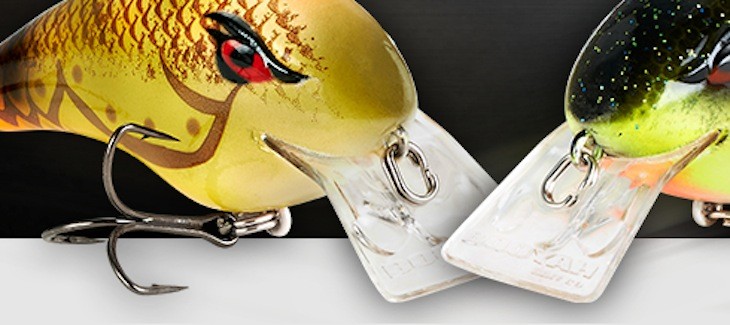Fishing lure, outdoor product company goes from ’nothing to 2 million’ social media followers in three years
by November 26, 2017 3:24 pm 1,236 views

Booyah baits sold by PRADCO Outdoor Brands.
During a recent jobs announcement, PRADCO Outdoor Brands Vice President of Human Resources and General Manger Bruce Stanton revealed the company had crossed the 2 million follower mark across all social media channels — a leap forward from the company’s humble beginnings in 1960 Fort Smith, Ark.
The company will soon employ 290 at its Fort Smith manufacturing facility. With the recent announcement of 60 new jobs, a 25-job pickup in early 2016, and another 64 since then, the job additions effectively double the company’s workforce in a two-year period. Part of the growth is courtesy of Wal-Mart Stores, PRADCO’s largest customer, carrying 867 individual products in their 4,000 U.S.-based stores.
But Stanton also believes the company’s social media strategy has made an impact, and there is research to back him up.
A 2015 article published in the International Journal of Research in Marketing — citing a study from authors Simon Hudson, Li Huang, Martin Roth, and Thomas Madden — found social media engagement improves brand perception, loyalty, and word-of-mouth recommendations. Study authors noted the effect is influenced by how “humanized” the consumers feel about the brand. In other words, if they feel connected to a brand like they do with another person, the relationship is stronger than when the brand is viewed as an object.
In a recent interview with Talk Business & Politics, Stanton discussed how PRADCO approaches its social media strategy, particularly how it got from “nothing to 2 million” in three years.
DIVIDE AND CONQUER
One of the first things PRADCO did when it dove into social media was fragment its followers. Stanton said the company’s 2 million followers are divided among several groups on social networking sites like Facebook and Twitter.
“We’re in it pretty heavy,” Stanton said. “We operate 17 Facebook sites in the United States. We even operate a site in Russia, in Russian. It’s all administered through here. We have our own employees gathering content and posting it. It’s a startup initiative — one that we started from zero a few years ago.”
Stanton said the company has done “some spending” with Facebook, but explained that being successful is about more than throwing money at a problem or goal.
“You go try to reach people who like bass fishing, or trout fishing, or spinning fishing. You target those people. And then on content, we encourage people to tag their friends. You might be entered into a drawing to win a lure. And then through spending and consumer contests, and really just good content, you end up building that audience from nothing to two million-plus.”
As to why the spending on Facebook specifically, Stanton did not say, but Pew Research Center notes the platform is more than two times as popular as the next most popular social network, with 79% of adults using it in the U.S. alone.
WHAT IS GOOD CONTENT?
Stanton said good content is different depending on the business one works, but said for PRADCO, a good piece of content “might be a pro like Jason Christie (three-time Bassmaster Classic Qualifier) winning a tournament, holding up a lure, and then saying, ‘I caught my fish on this YUM Dinger (a PRADCO product) by letting it sink slowly.’ Just a little paragraph about how he fished it and won $100,000. You know, if you fish tournaments, you like that because you want to win money and you want to do well at fishing tournaments, so you’re going to read what he did to win. For a tournament fisherman, that’s a good piece of content.”
But PRADCO customers are not one-size-fits-all, hence the need for multiple social media groups.
”For example, a trout fisherman — the brown trout are responding on the Arkansas trout streams right now, so we’ve been out taking pictures of catching trout on Rogues and Rebels (two additional PRADCO products) and we’ll post that to people who like trout fishing. They’re not the tournament guys. They’re totally separate fishermen.”
Stanton said the company’s main objective is to relate to the consumer of that particular brand.
“Some of them are pro fishermen. Some of them are plank fishermen. (Some are) wade fishermen.”
Stanton continued: “What we’ve found is social media allows us to reach out and touch those people where traditional media wasn’t. Bassmaster Magazine goes to half a million subscribers, and those guys all fish tournaments. But how do I reach the people that kayak fish, that canoe fish, that wade fish, that trout fish? So we figured going out and developing communities on Facebook, Twitter — that helps us reach people and develop conversations we haven’t been able to have before.”
